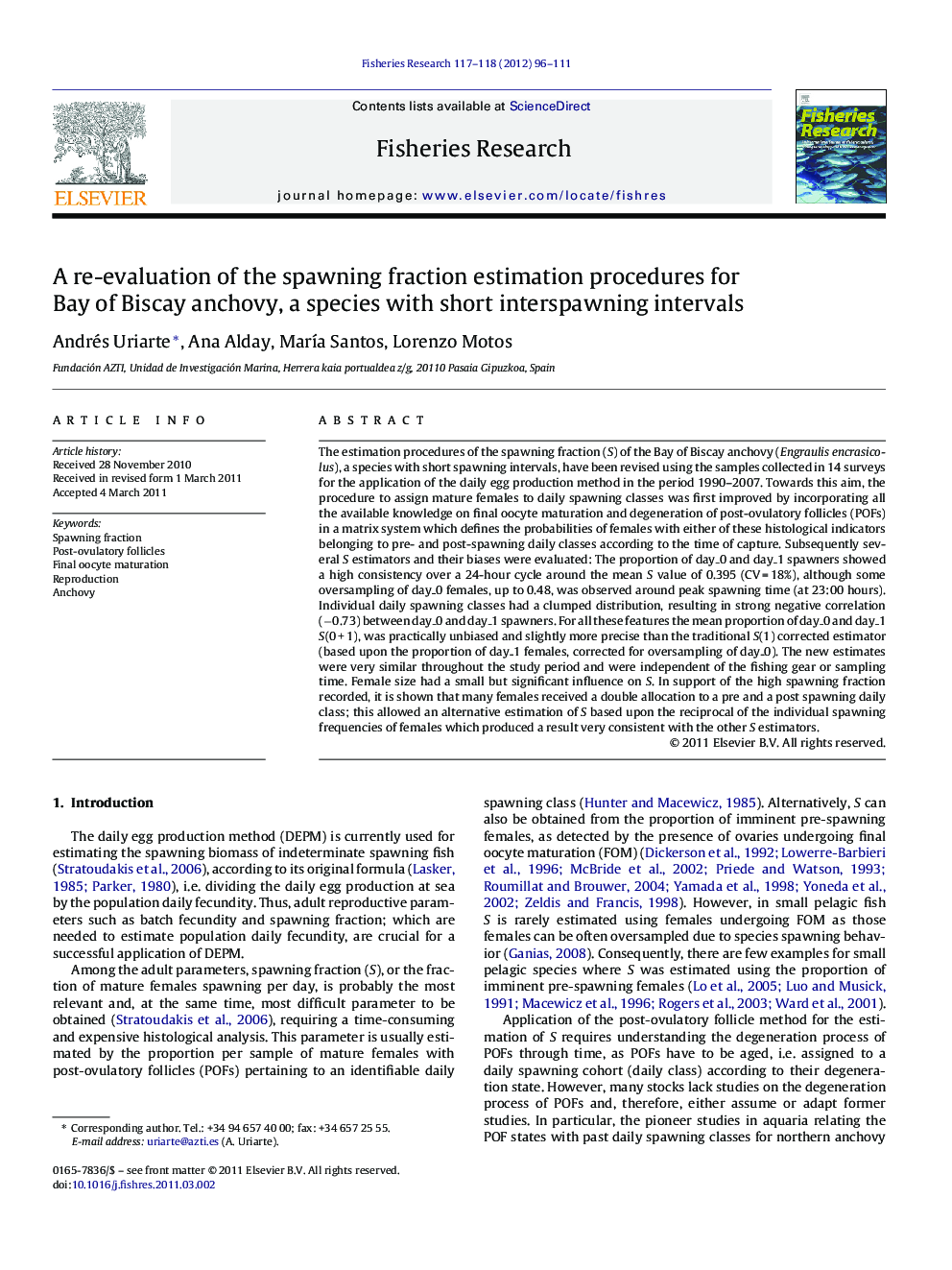| کد مقاله | کد نشریه | سال انتشار | مقاله انگلیسی | نسخه تمام متن |
|---|---|---|---|---|
| 4543485 | 1626840 | 2012 | 16 صفحه PDF | دانلود رایگان |

The estimation procedures of the spawning fraction (S) of the Bay of Biscay anchovy (Engraulis encrasicolus), a species with short spawning intervals, have been revised using the samples collected in 14 surveys for the application of the daily egg production method in the period 1990–2007. Towards this aim, the procedure to assign mature females to daily spawning classes was first improved by incorporating all the available knowledge on final oocyte maturation and degeneration of post-ovulatory follicles (POFs) in a matrix system which defines the probabilities of females with either of these histological indicators belonging to pre- and post-spawning daily classes according to the time of capture. Subsequently several S estimators and their biases were evaluated: The proportion of day_0 and day_1 spawners showed a high consistency over a 24-hour cycle around the mean S value of 0.395 (CV = 18%), although some oversampling of day_0 females, up to 0.48, was observed around peak spawning time (at 23:00 hours). Individual daily spawning classes had a clumped distribution, resulting in strong negative correlation (−0.73) between day_0 and day_1 spawners. For all these features the mean proportion of day_0 and day_1 S(0 + 1), was practically unbiased and slightly more precise than the traditional S(1) corrected estimator (based upon the proportion of day_1 females, corrected for oversampling of day_0). The new estimates were very similar throughout the study period and were independent of the fishing gear or sampling time. Female size had a small but significant influence on S. In support of the high spawning fraction recorded, it is shown that many females received a double allocation to a pre and a post spawning daily class; this allowed an alternative estimation of S based upon the reciprocal of the individual spawning frequencies of females which produced a result very consistent with the other S estimators.
► Splitting the staging of histological indicators of spawning from their ageing (i.e. assignation to spawning classes), is proposed for the Bay of Biscay anchovy. For the ageing, a matrix system is defined according to knowledge regarding final oocyte maturation and degeneration of post-ovulatory follicles (POFs). The matrix provides the probabilities of examined females belonging to pre- or post-spawning daily classes, according to the time of capture.
► Several spawning fraction estimators based on the prevalence of day_0 and/or day_1 spawning classes were evaluated, from a large data set of 14 DEPM surveys, in terms of variance and bias. These properties depended on the pattern of aggregation of the daily classes and the oversampling of day 0. An alternative estimation of S, based upon the reciprocal of the individual spawning frequencies of females, produced a result highly consistent with the other S estimators, all of which were around 0.4.
► We conclude that for species with high spawning fraction (usually above 0.33), little oversampling of day_0, and/or a strong negative correlation between day_0 and day_1, S(0 + 1), the mean proportion of these two spawning classes can be considered a robust estimator, providing the most precise estimate of S for this anchovy, with negligible bias.
Journal: Fisheries Research - Volumes 117–118, April 2012, Pages 96–111